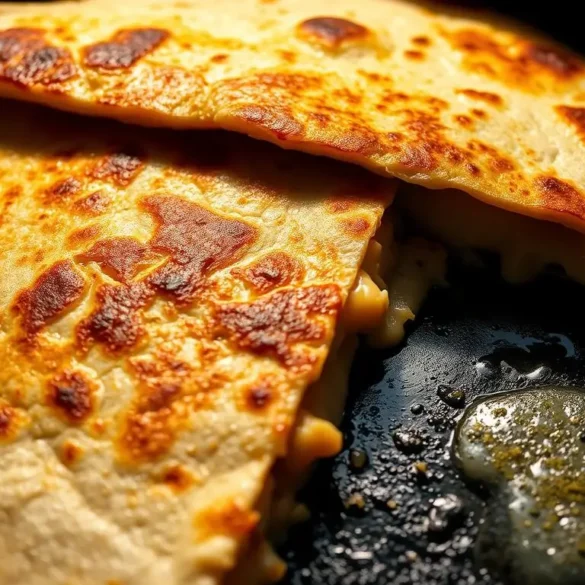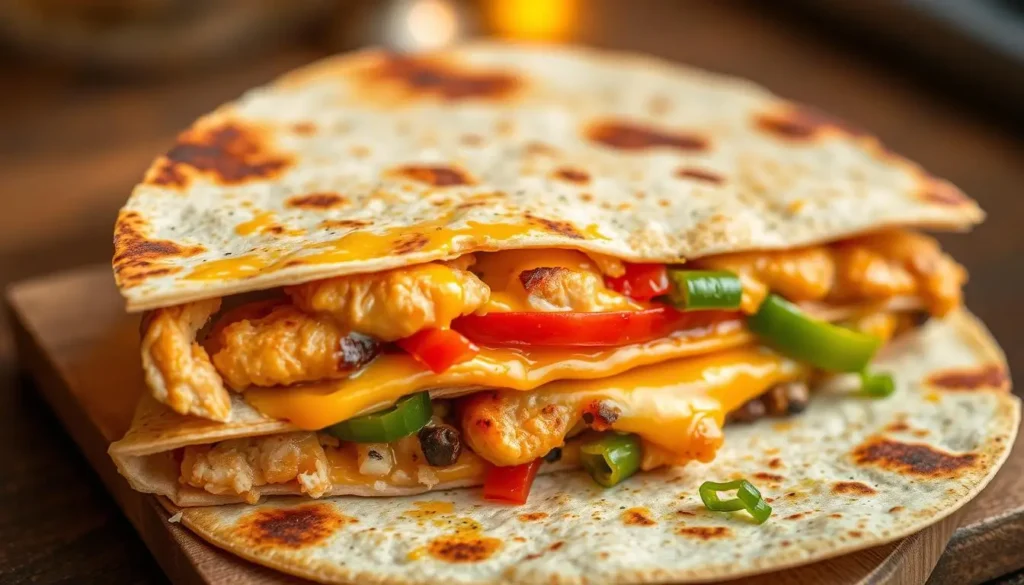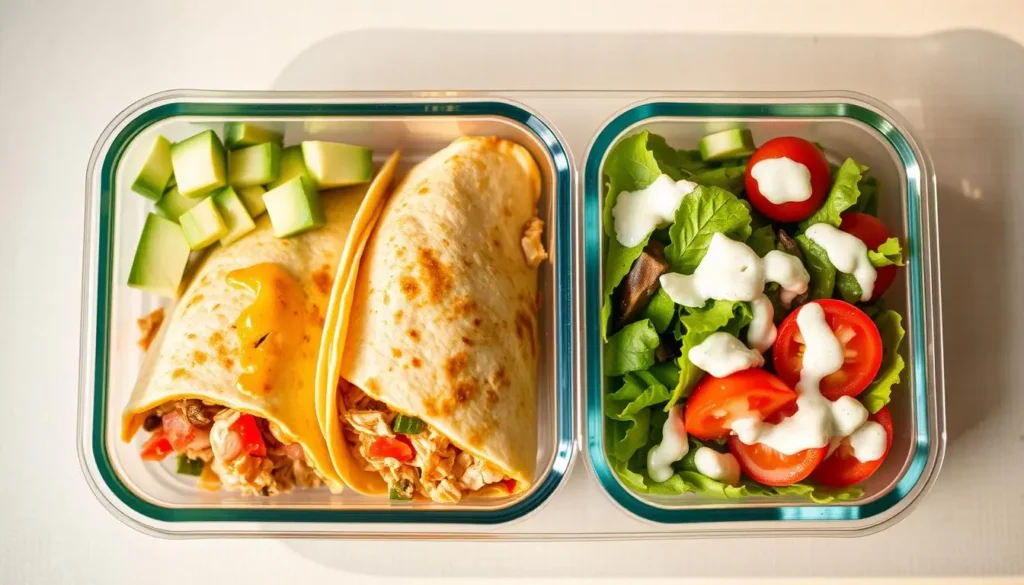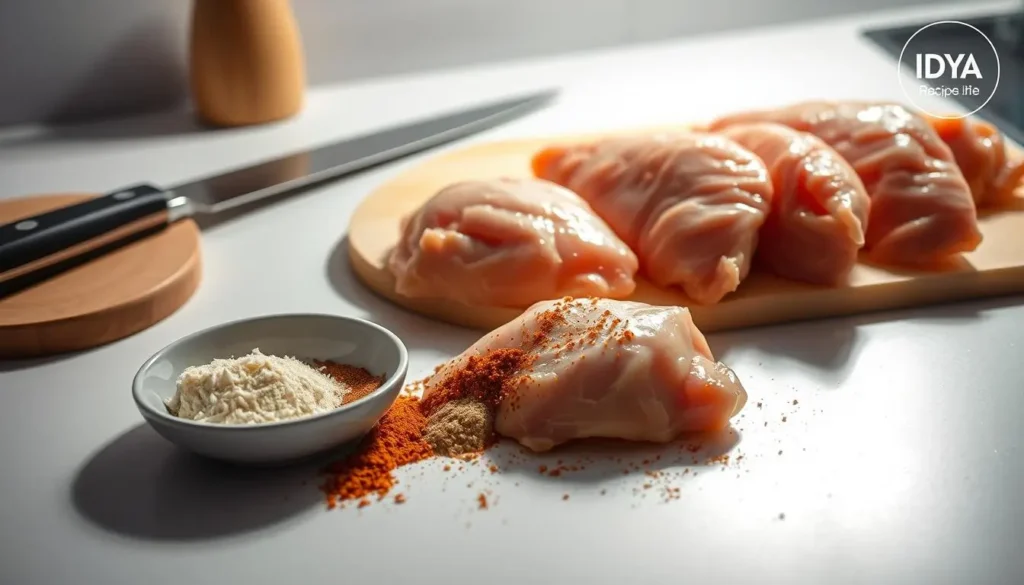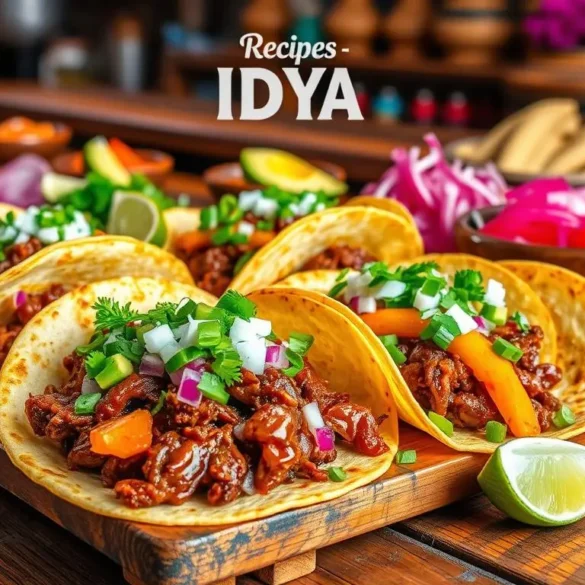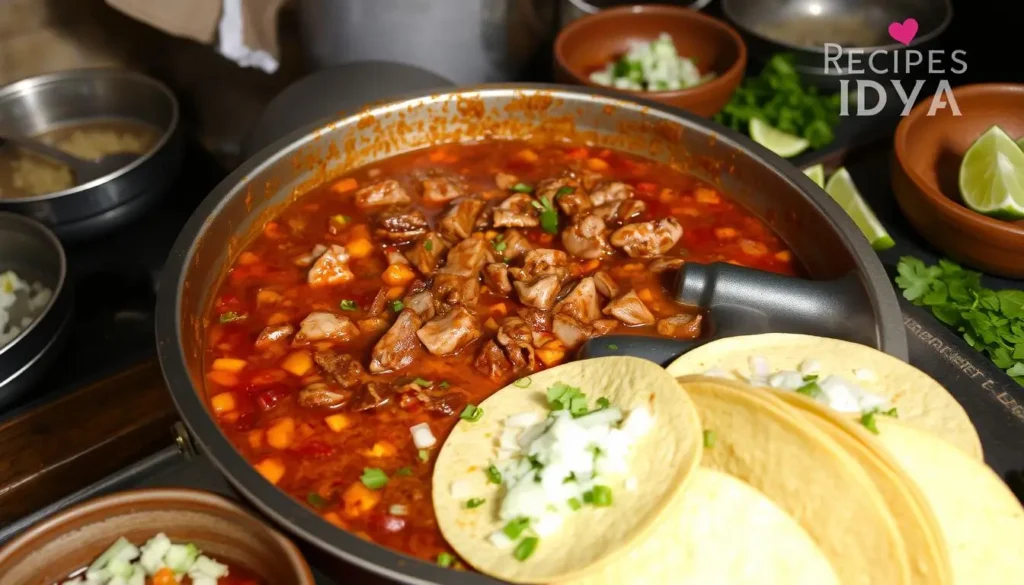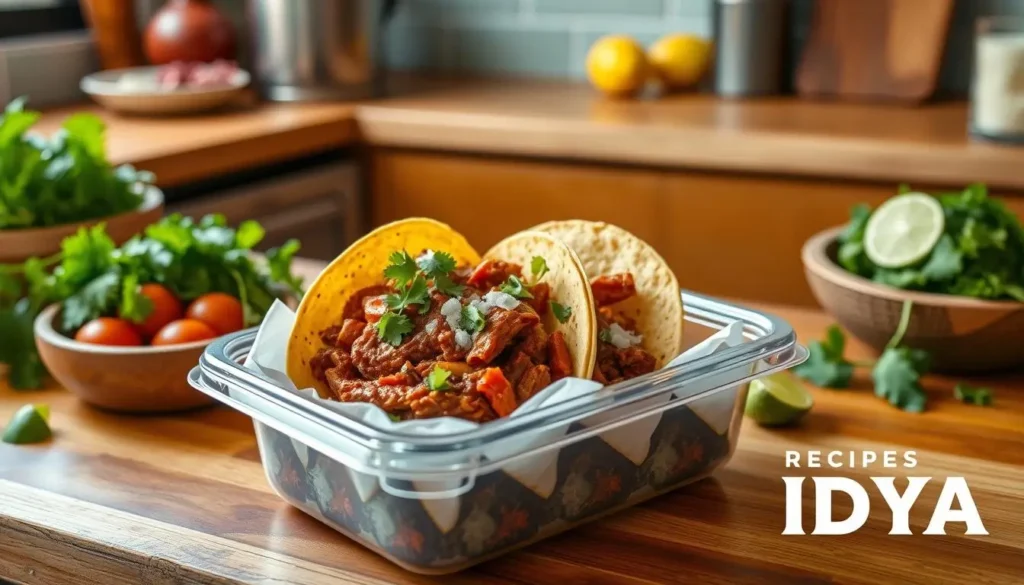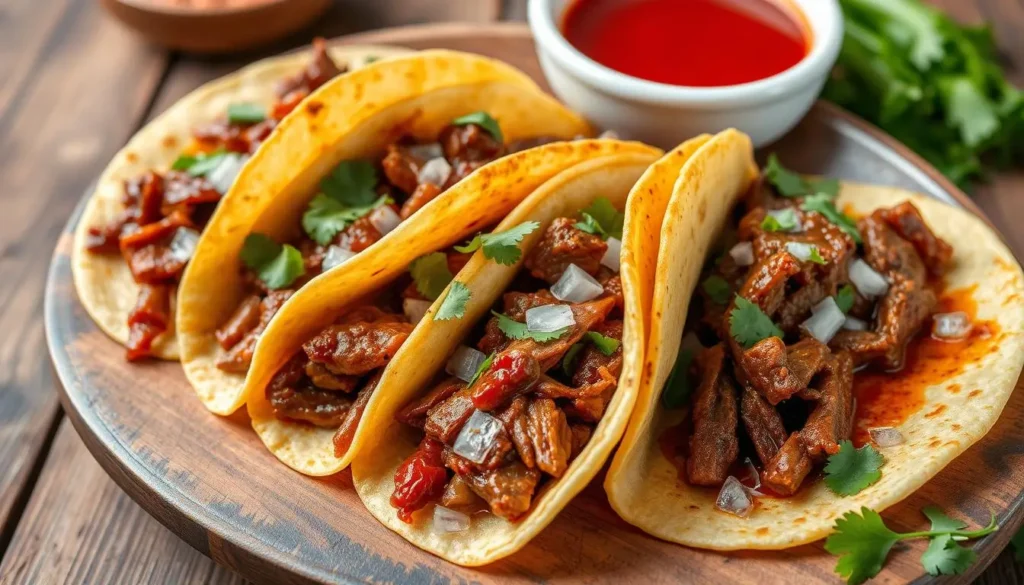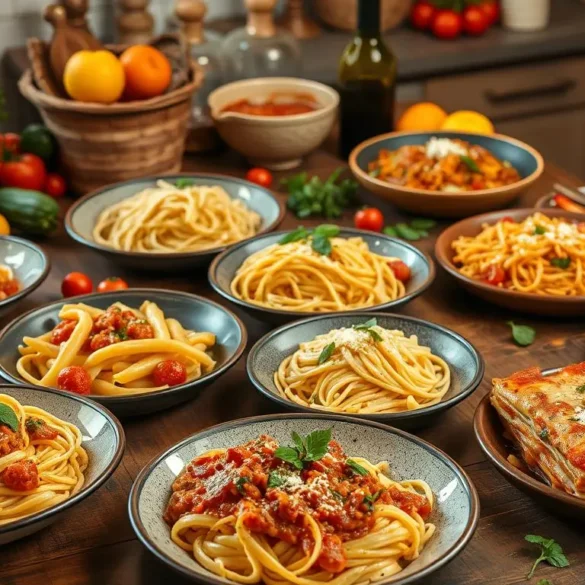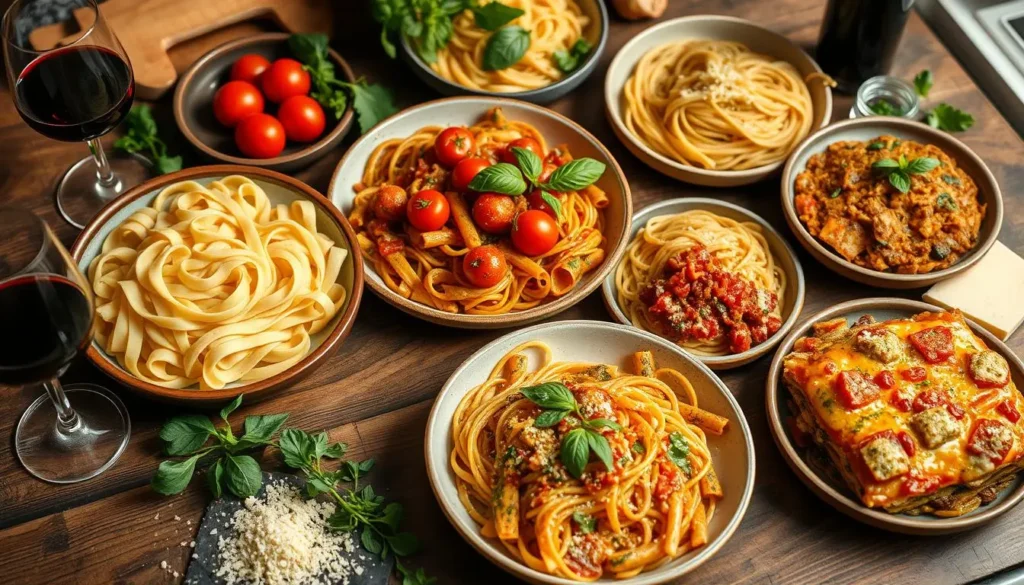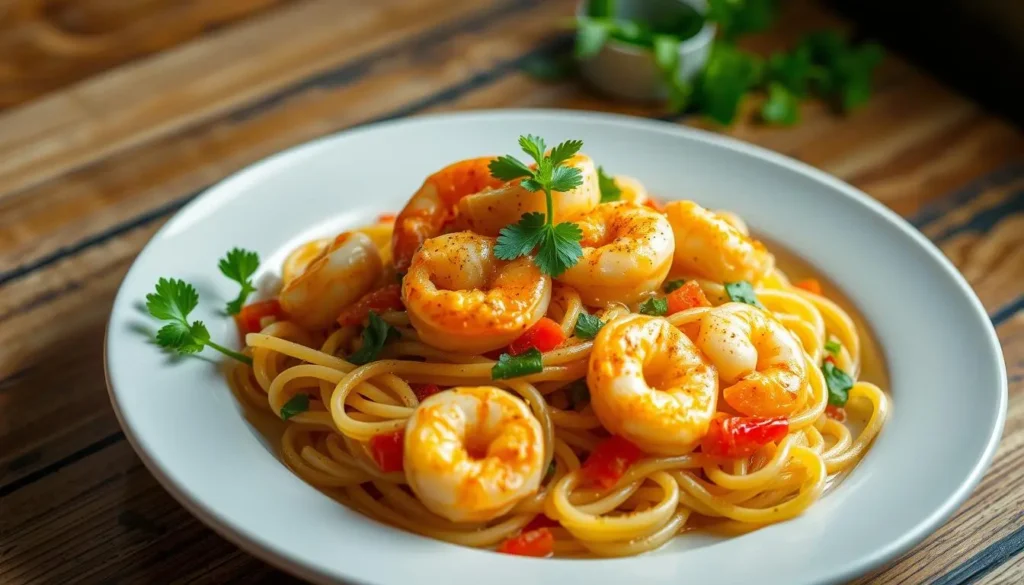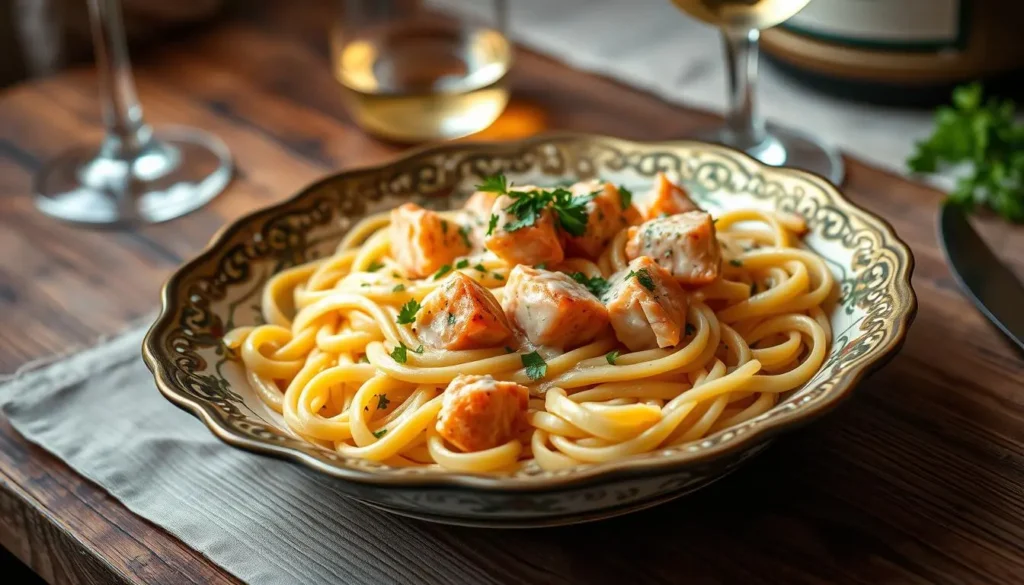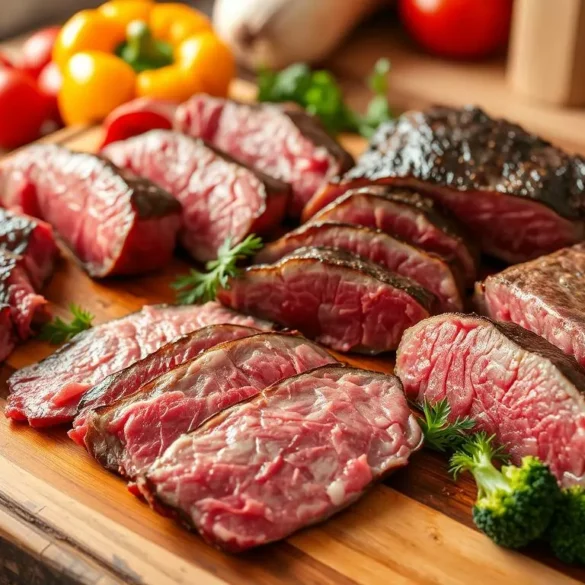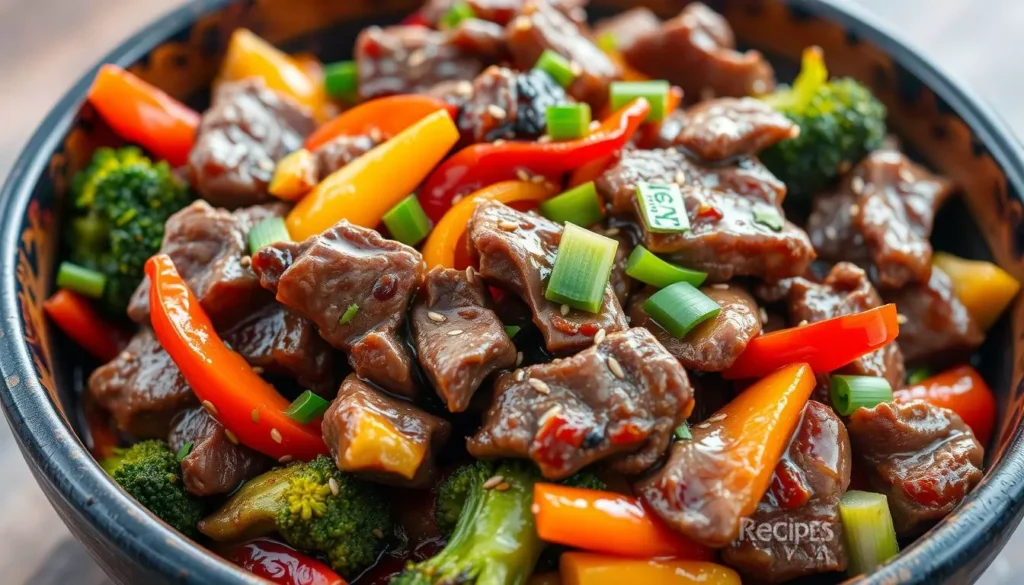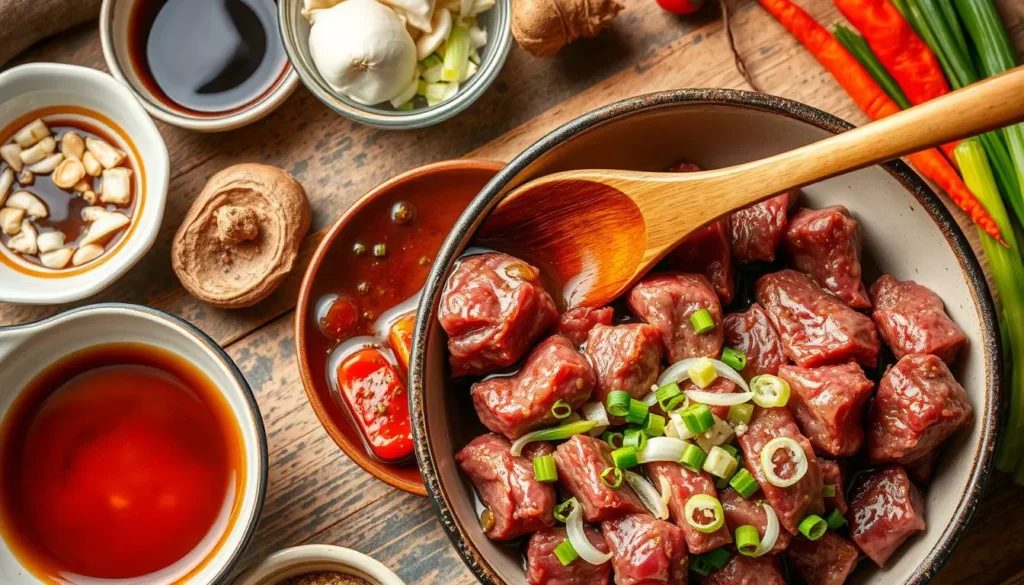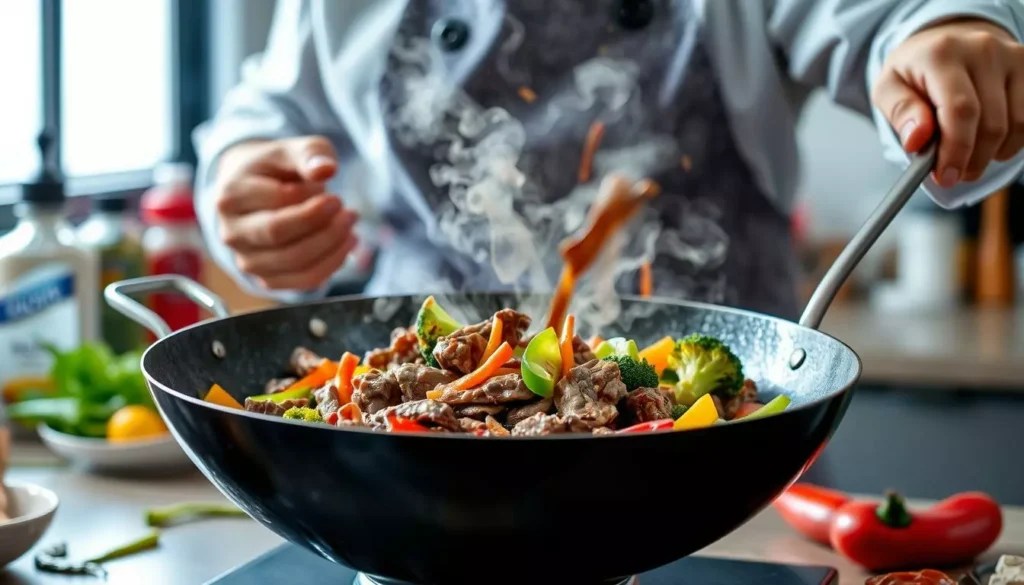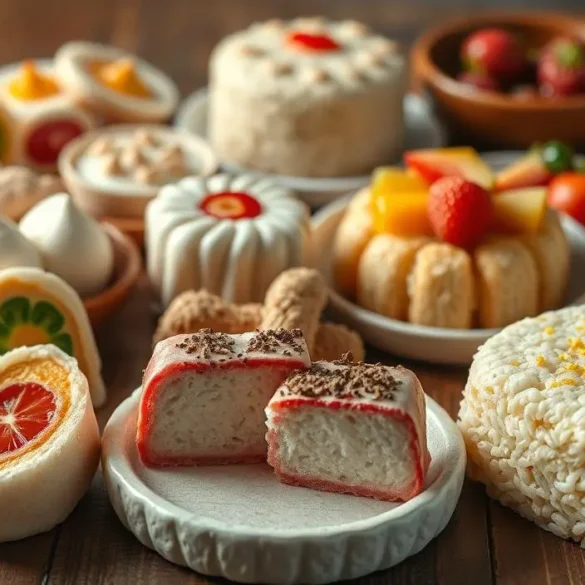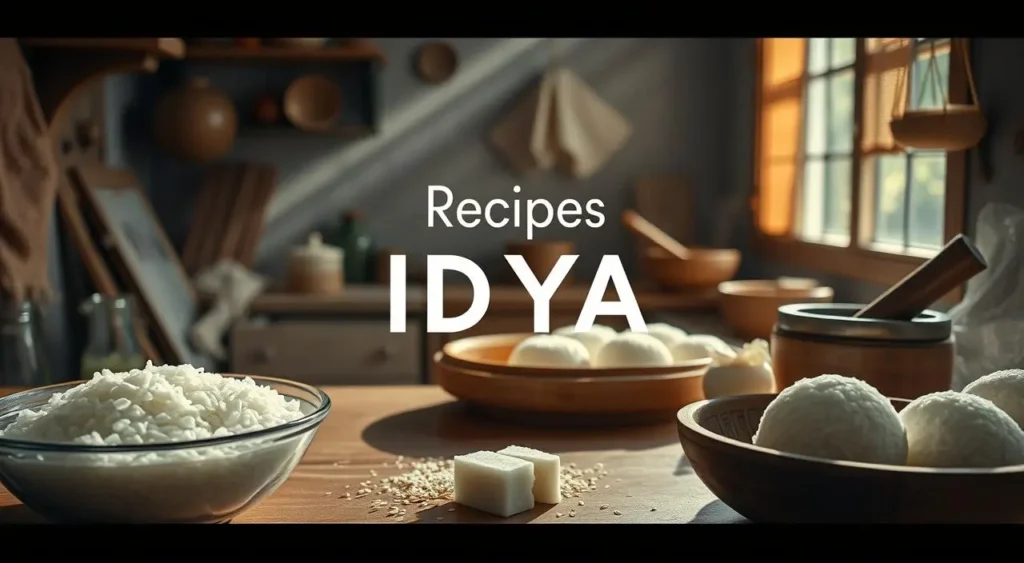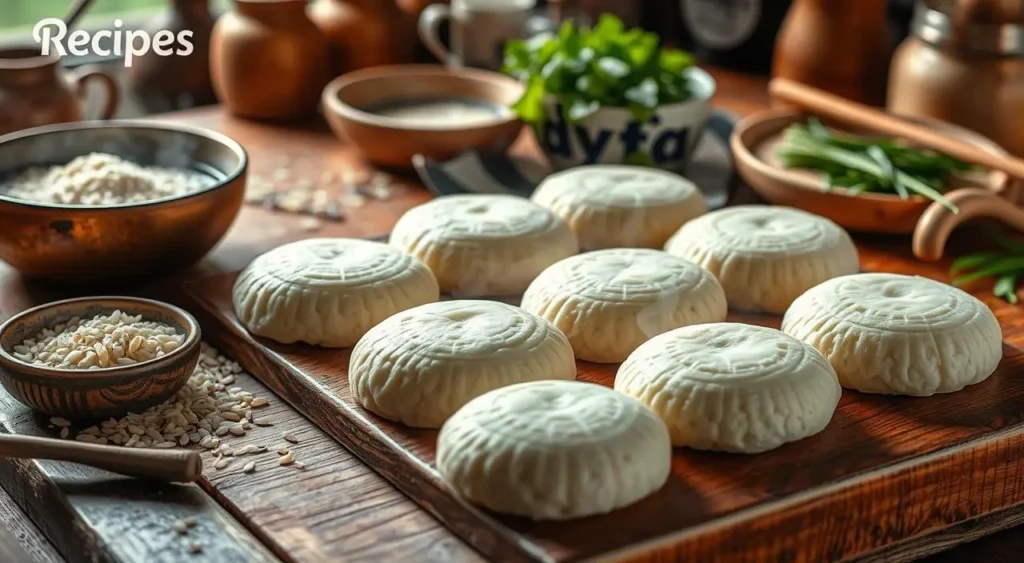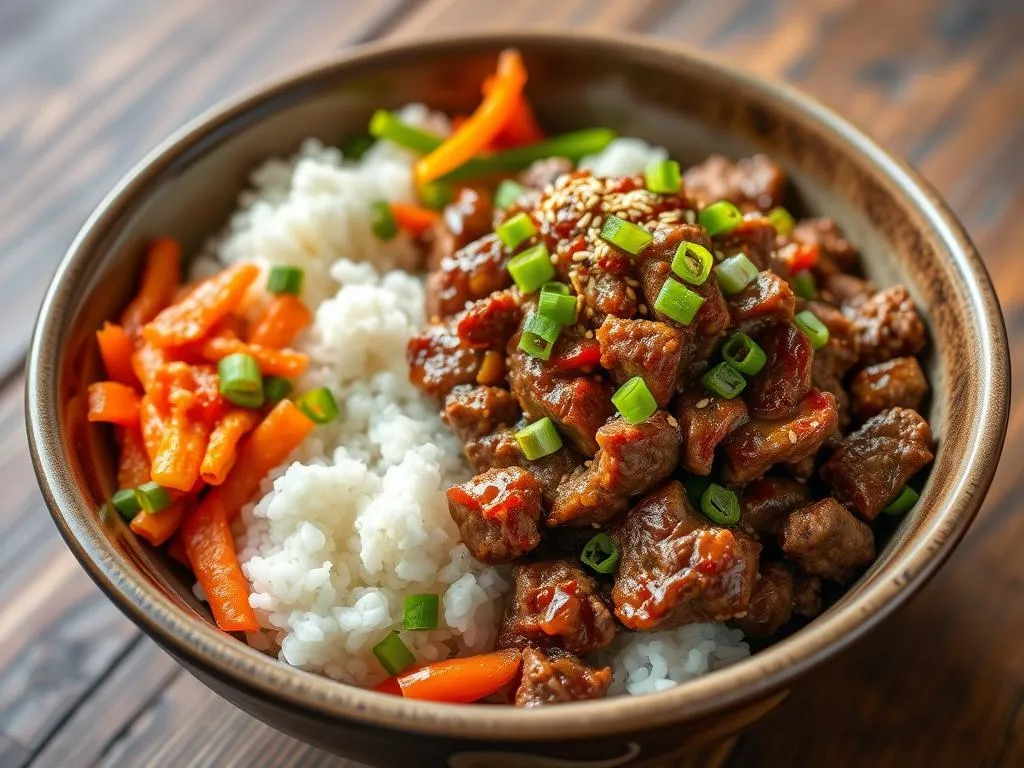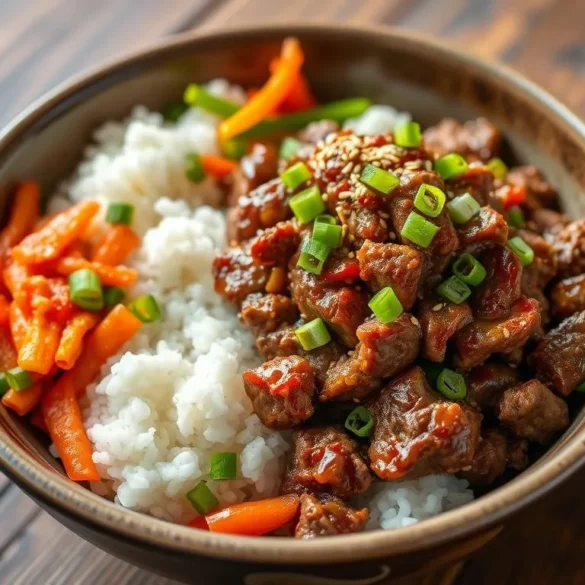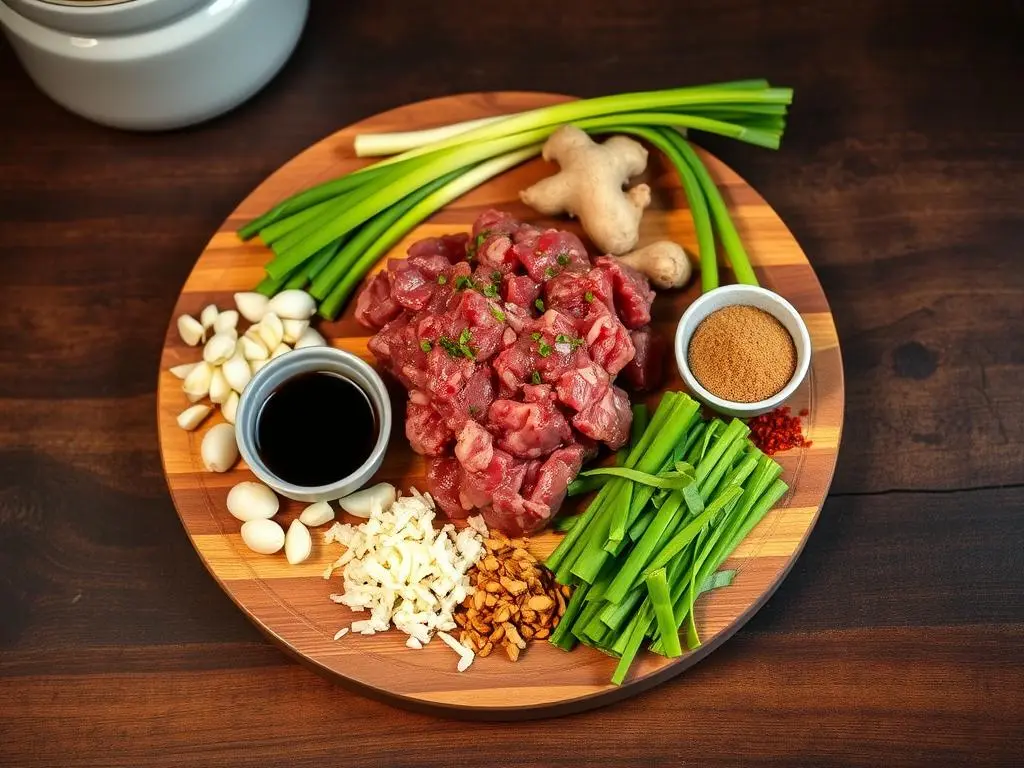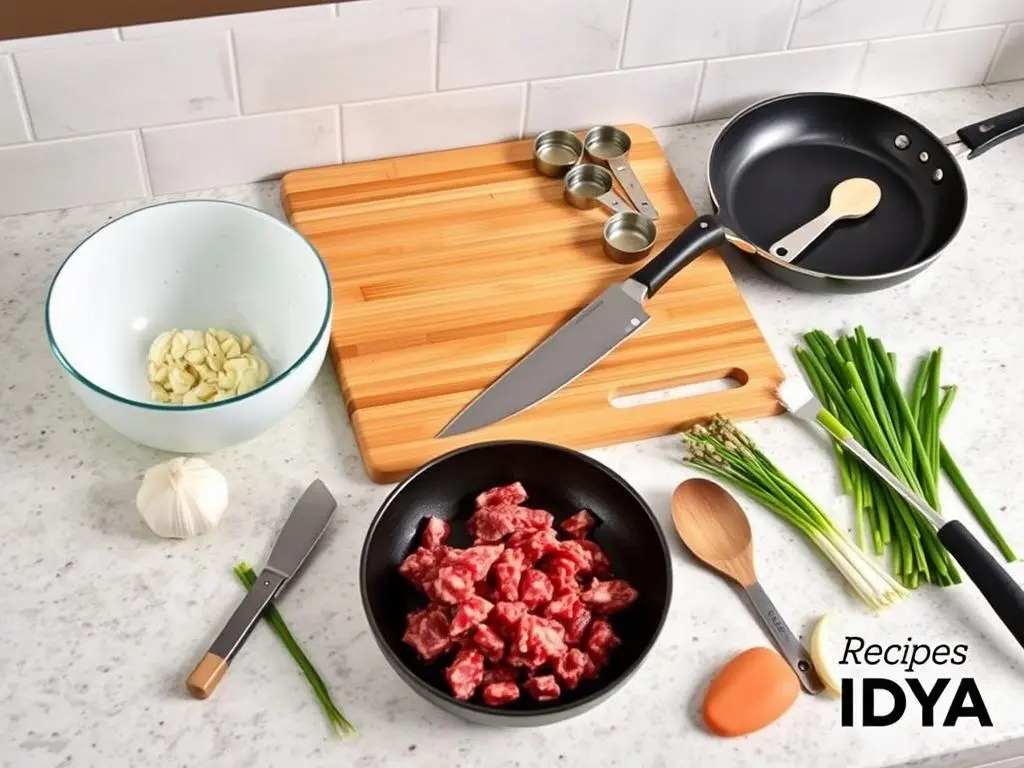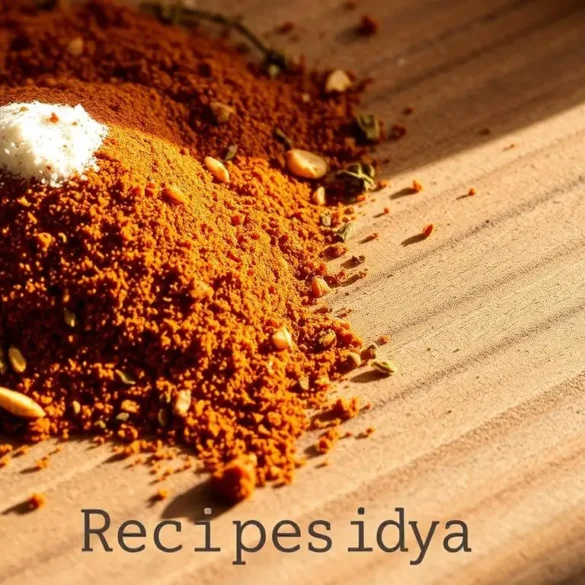
Ingredients
- 1 tablespoon chili powder
- 1 teaspoon paprika
- 1 teaspoon ground cumin
- 1/2 teaspoon garlic powder
- 1/2 teaspoon onion powder
- 1/2 teaspoon ground coriander
- 1/2 teaspoon dried oregano
- 1/4 teaspoon cayenne pepper (optional for heat)
- Salt and pepper to taste
Instructions
1. In a small bowl, combine all the ingredients.
2. Mix well until evenly combined.
3. Store the seasoning mix in an airtight container or spice jar for up to 6 months.
4. Use 1-2 tablespoons of the seasoning per pound of meat or vegetables for fajitas, tacos, or any dish that could use a flavorful kick.
Notes
For extra heat, adjust the cayenne pepper to your preference. This seasoning mix can also be used for grilling vegetables or as a flavor boost for roasted potatoes.
Table of Contents
Are you tired of bland, boring fajitas? Do you crave the authentic Mexican kick? What if you could make every meal special with a simple homemade fajita seasoning recipe?
Making your own fajita seasoning is surprisingly easy. This special mix of spices can turn plain chicken, beef, or veggies into a dish fit for a restaurant. With homemade seasoning, you control the flavor, heat, and quality.
Forget the store-bought packets full of preservatives. With a few basic pantry items, you can make a fajita seasoning that’s fresher and more vibrant. You can make it just the way you like it.
Key Takeaways
- Create authentic Mexican flavors at home
- Control ingredients and spice levels
- Save money compared to store-bought seasonings
- Customize your fajita seasoning blend
- Enhance meals with fresh, homemade spice mix
What is Fajita Seasoning?
Fajita seasoning is a vibrant Tex-Mex spice mix that adds explosive flavor to your favorite dishes. It turns ordinary proteins and vegetables into a culinary experience. This experience takes your taste buds straight to the heart of Southwest cuisine.
A chili powder blend is at the heart of authentic fajita seasoning. This mix combines multiple spices to create a complex flavor. It makes any meal go from simple to spectacular.
Overview of Fajita Seasoning
A classic fajita seasoning has a balanced mix of dried spices. The goal is to create a blend that adds warmth, depth, and excitement to your cooking.
- Provides instant flavor enhancement
- Works with multiple protein types
- Creates authentic Tex-Mex taste experience
Common Ingredients
Knowing the key components of a Tex-Mex spice mix helps you appreciate fajita seasoning. Let’s look at the typical ingredients that make this blend special:
| Ingredient | Flavor Profile | Purpose |
|---|---|---|
| Chili Powder | Warm, slightly spicy | Primary heat source |
| Cumin | Earthy, smoky | Depth and complexity |
| Paprika | Sweet, mild pepper | Color and subtle sweetness |
| Garlic Powder | Pungent, savory | Aromatic base |
Each ingredient in a chili powder blend is crucial for the perfect fajita seasoning. By knowing these components, you can make a mix that fits your taste.
Why Make Your Own Fajita Seasoning?
Creating your own homemade fajita seasoning makes cooking special. It lets you control flavors and be creative in the kitchen.
There are many reasons to make your own seasoning. Store-bought options just can’t compare:
- Complete ingredient transparency
- Zero artificial preservatives
- Customizable spice levels
- Fresh, vibrant flavor profiles
Benefits of Homemade Seasoning
Homemade fajita seasoning lets you tweak flavors to your liking. You can add more heat, reduce salt, or try new spice mixes. This is something store-bought blends can’t do.
Cost-Effectiveness Compared to Store-Bought
Homemade seasoning is not only tastier but also cheaper. Buying spices in bulk saves money. You can make lots of seasoning for less than store-bought.
Control your ingredients, control your flavor!
Essential Ingredients for Fajita Seasoning
Making the perfect fajita seasoning means knowing the key ingredients. These ingredients add bold, vibrant flavors to your dish. Your homemade blend will turn simple meals into amazing culinary experiences.
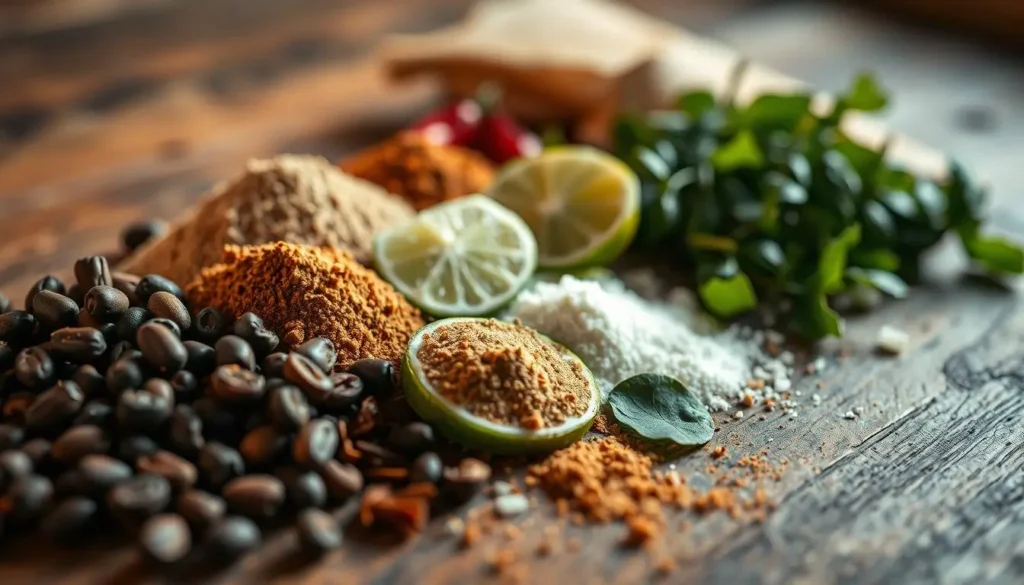
The base of great cumin seasoning is choosing top-notch spices. These spices should work well together. Let’s look at the must-haves for your fajita seasoning.
Chili Powder: The Flavor Backbone
Chili powder is the main flavor in your seasoning. It adds a warm, rich heat that’s key to fajita taste. Pick a high-quality chili powder for the best flavor.
Cumin: The Aromatic Cornerstone
Cumin seasoning adds an earthy, warm taste to your fajita mix. It’s essential for authentic Mexican dishes. It gives a unique aroma that makes the flavor better.
Garlic Powder: Intense Flavor Enhancer
A good garlic powder blend adds strong flavor without fresh garlic’s moisture. It gives a consistent taste that mixes well with other spices.
Optional Ingredients to Customize Your Blend
- Smoked paprika for added depth
- Dried oregano for herbaceous notes
- Cayenne pepper for extra heat
- Black pepper for additional warmth
| Ingredient | Flavor Profile | Intensity |
|---|---|---|
| Chili Powder | Warm, Spicy | Medium-High |
| Cumin | Earthy, Nutty | Medium |
| Garlic Powder | Sharp, Pungent | Medium |
Trying out these ingredients lets you make a garlic powder blend that’s just right for you. The trick is to find the right balance of flavors for a perfect seasoning mix.
Step-by-Step Fajita Seasoning Recipe
Making your own Mexican spice rub for fajitas is simple. A homemade fajita seasoning recipe lets you control the flavor. It also saves money compared to buying it.
To make a tasty fajita seasoning, you need just a few ingredients. You also need minimal time to prepare. The secret is using fresh, quality spices for authentic Mexican flavors.
Measuring the Ingredients
For the best Mexican spice rub, you need the right amounts. Here are the ingredients you’ll need:
- 2 tablespoons chili powder
- 1 tablespoon ground cumin
- 1 tablespoon garlic powder
- 1 teaspoon paprika
- 1 teaspoon dried oregano
- 1 teaspoon salt
- 1/2 teaspoon black pepper
Mixing Your Seasoning
Making your fajita seasoning is easy. Just follow these steps:
- Grab a small mixing bowl
- Add all measured spices
- Whisk the ingredients together
- Make sure the spices are evenly mixed
“The secret to a great Mexican spice rub is in the balance of flavors.” – Culinary Expert
Keep your homemade fajita seasoning in an airtight container. It will stay flavorful for up to 3 months. Store it in a cool, dark place.
How to Use Fajita Seasoning
Your homemade Mexican spice rub is a treasure in your kitchen. It can turn simple meals into amazing dishes. Use your Tex-Mex spice mix on chicken, beef, and veggies to boost their flavors.
Learning to use fajita seasoning is key. It’s about coating and infusing your food with deep flavors. Whether it’s a quick dinner or a weekend party, these tips will make your fajitas taste great.
Marinating Chicken or Beef
Marinating proteins is a must. Here’s how to do it right:
- Coat meat evenly with your Mexican spice rub
- Let chicken or beef marinate for 30 minutes to 2 hours
- Keep it in the fridge while marinating
- Pat dry before cooking for better browning
The secret to a great marinade is even coverage and enough time. Your spice mix will soak into the meat, adding rich flavors.
Seasoning Vegetables for Fajitas
Don’t forget to season your veggies for fajitas. Toss sliced bell peppers, onions, and more in the spice rub before cooking. This way, your veggies will be crisp and flavorful, matching your protein perfectly.
- Cut vegetables into even slices
- Spread Tex-Mex spice mix over them
- Cook on high heat for caramelization
- Stir often to avoid burning
Storage Tips for Fajita Seasoning
Keeping your homemade fajita seasoning fresh is key. The right storage can make it last months. This way, your chili powder blend stays full of flavor and aroma.

Give your homemade fajita seasoning the care it needs. The right storage can greatly improve its quality. This ensures your spices stay delicious for a long time.
Perfect Storage Containers
Choosing the right container is crucial:
- Airtight glass jars with tight-fitting lids
- Ceramic containers with sealed tops
- Stainless steel spice containers
Optimal Storage Conditions
Keep your chili powder blend safe from harm:
- Store in a cool, dark place
- Avoid direct sunlight
- Keep away from heat sources
- Maintain low humidity
Shelf Life of Homemade Seasoning
Your homemade fajita seasoning stays fresh for 3-6 months. Look out for these signs of spoilage:
- Loss of vibrant color
- Reduced aroma
- Clumping or moisture buildup
Follow these tips to keep your seasoning fresh. This way, it will always be ready to add flavor to your meals.
Variations on the Classic Fajita Seasoning
Trying out different fajita seasoning recipes can make cooking more fun. The classic recipe is a great start, but adding spicy or smoky twists can take your dishes to the next level.
Spicing up your paprika blend lets you control the heat and flavor of your fajitas. Here are some fun variations to try:
Spicy Fajita Seasoning Twist
If you like a little heat, this spicy recipe is for you. It adds a fiery kick to your fajitas. Here are some ingredients to add more heat:
- Cayenne pepper for intense heat
- Crushed red pepper flakes
- Extra ground chipotle powder
Smoky Fajita Seasoning Delight
A smoky seasoning can make your dishes richer and more complex. For a smoky flavor, try these ingredients:
- Smoked paprika
- Ground chipotle pepper
- A touch of ground cumin
When making your fajita seasoning, remember to balance the flavors. Start with small amounts of spices and adjust to your liking.
Pro tip: Always taste and adjust your seasoning blend before using it on your entire dish.
Cooking Tips for Perfect Fajitas
Making delicious fajitas is more than just using a good Tex-Mex spice mix. The right protein and cooking method make a big difference. Let’s explore how to make your fajitas taste like they came from a restaurant.
Selecting Your Protein
Choosing the right protein is key for tasty fajitas. Your Mexican spice rub will shine with these top picks:
- Skirt Steak: The traditional choice for authentic flavor
- Chicken Breast: Lean and versatile
- Shrimp: A lighter seafood alternative
- Portobello Mushrooms: Perfect for vegetarian options
Mastering Cooking Methods
The secret to perfect fajitas is in the cooking technique. Each method brings out unique flavors in your Tex-Mex spice mix:
- Grilling: High heat creates delicious char marks
- Skillet Cooking: Quick and even heat distribution
- Oven Roasting: Consistent temperature for tender meat
Pro tip: Slice your protein against the grain for maximum tenderness. Marinate with your Mexican spice rub for at least 30 minutes before cooking to enhance flavor penetration.
The secret to great fajitas is allowing your proteins to rest after cooking, letting the juices redistribute for maximum flavor.
Gluten-Free and Dietary Considerations
Creating a delicious fajita experience doesn’t mean you have to give up on dietary needs. Whether you’re managing gluten sensitivities or exploring vegetarian options, your taco seasoning blend can be both flexible and flavorful.
Gluten-Free Fajita Seasoning Alternatives
Many commercial seasoning blends contain hidden gluten sources. When preparing your onion powder seasoning at home, you can ensure a completely gluten-free mix by carefully selecting ingredients.
- Use pure spices without anti-caking agents
- Check individual spice labels for gluten-free certification
- Avoid pre-mixed seasoning packets
- Verify each ingredient’s manufacturing process
Vegetarian Fajita Options
Vegetarian fajitas can be just as exciting and satisfying as meat-based versions. Protein-rich alternatives like tofu, tempeh, and seitan provide excellent texture and absorb seasonings beautifully.
| Vegetarian Protein | Preparation Tip | Flavor Intensity |
|---|---|---|
| Firm Tofu | Press and marinate before grilling | Mild |
| Tempeh | Slice thin, season generously | Strong |
| Portobello Mushrooms | Slice and grill with seasoning | Rich |
Remember that a well-crafted taco seasoning blend can transform any plant-based protein into a mouthwatering meal. Experiment with different ingredients to find your perfect vegetarian fajita combination.
Pairing Your Fajitas with Sides
Make your fajita meal even better with the right sides and drinks. These can turn a simple dish into a flavorful adventure. Your taste buds will thank you.
Recommended Side Dishes
Choosing the perfect sides can really boost your fajita experience. Here are some tasty choices:
- Mexican Rice: A classic choice with fluffy, seasoned grains
- Refried Beans: Creamy and rich, great for scooping
- Guacamole: Fresh and zesty avocado dip
- Pico de Gallo: Bright, fresh salsa with chopped tomatoes
- Roasted Corn Salad: Sweet and tangy side dish
Beverage Pairings
Drinks can also make your meal better. Choose ones that match and enhance the flavors:
| Beverage Type | Recommended Options |
|---|---|
| Alcoholic | Margarita, Mexican Beer, Sangria |
| Non-Alcoholic | Horchata, Agua Fresca, Lime Soda |
Pro tip: Pick drinks that balance the spicy flavors of your fajitas. A citrusy drink is perfect for cutting through the spice.
Popular Fajita Recipes to Try
Making delicious fajitas at home is easier than you think. With a homemade fajita seasoning recipe, your dinner will taste like a restaurant meal. Everyone will love it.
Your homemade fajita seasoning is the key to these tasty recipes. Whether you want chicken or beef, these dishes bring authentic Mexican flavors to your kitchen.
Classic Chicken Fajitas
Impress your family with this simple yet delicious chicken fajita recipe!
- Ingredients:
- 2 lbs boneless chicken breasts
- 3 tablespoons homemade fajita seasoning
- 2 bell peppers, sliced
- 1 large onion, sliced
- 2 tablespoons olive oil
- Instructions:
- Cut chicken into thin strips
- Coat chicken with fajita seasoning
- Sauté chicken and vegetables in hot skillet
- Cook until chicken is golden and vegetables are tender
Sizzling Beef Fajitas
Beef lovers will love this robust and flavorful fajita seasoning recipe. It turns ordinary steak into an extraordinary meal.
- Ingredients:
- 2 lbs flank steak
- 4 tablespoons homemade fajita seasoning
- 2 colored bell peppers
- 1 red onion
- Lime wedges for serving
- Cooking Tips:
- Slice beef against the grain
- Marinate with fajita seasoning for 30 minutes
- Grill or pan-sear on high heat
- Rest meat for 5 minutes before serving
“The key to perfect fajitas is a balanced homemade fajita seasoning and high-heat cooking!” – Chef Maria Rodriguez
Pro tip: Always have your homemade fajita seasoning ready. It will elevate any protein or vegetable dish. These recipes are just the start of your culinary adventure!
Fajita Seasoning for Other Dishes
Your homemade taco seasoning blend isn’t just for fajitas. It can make many dishes more exciting. Find out how to use it in new ways.
Elevating Tacos with Flavor
Tacos get amazing when you add your homemade fajita seasoning. It’s great for:
- Ground beef tacos
- Shredded chicken tacos
- Fish tacos
- Vegetarian taco fillings
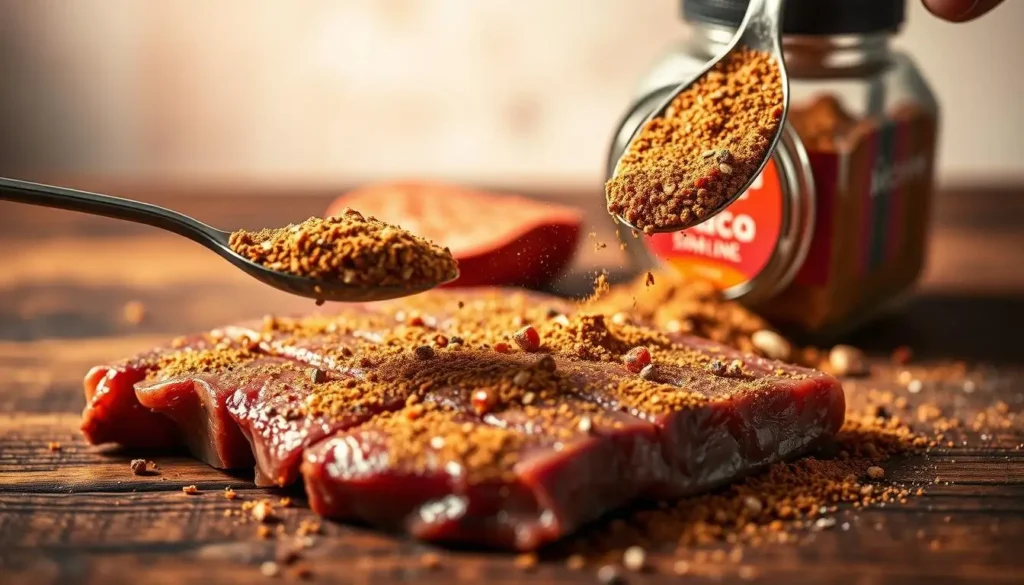
Creative Marinades for Diverse Dishes
Your Mexican spice rub makes awesome marinades for proteins and veggies. Here’s how to use it best:
| Protein/Vegetable | Marinating Time | Recommended Cooking Method |
|---|---|---|
| Chicken Breasts | 2-4 hours | Grilling |
| Shrimp | 30 minutes | Sautéing |
| Tofu | 1-2 hours | Baking |
| Portobello Mushrooms | 1 hour | Roasting |
Try your taco seasoning blend in different ways. Add it to salad dressings, sprinkle on roasted veggies, or use as a dry rub for grilling. The fun never stops!
Frequently Asked Questions
Many home cooks wonder about making their own fajita seasoning. Knowing how to use your chili powder blend can enhance flavor and storage. It’s all about understanding the details.
How Long Can I Keep Fajita Seasoning?
Your homemade fajita seasoning stays fresh for 3-6 months if stored right. Keeping it in an airtight container is key. This helps keep the chili powder blend’s flavor strong.
- Store in an airtight container
- Keep away from direct sunlight
- Maintain a cool, dry environment
- Use clean, dry measuring spoons when handling
Can I Adjust the Spice Level?
Yes, you can! Making your own fajita seasoning lets you tailor the spice to your liking. You can tweak the chili powder blend to fit your taste.
| Spice Level | Ingredient Adjustment |
|---|---|
| Mild | Reduce cayenne pepper, increase paprika |
| Medium | Balance cayenne with equal parts paprika |
| Hot | Increase cayenne, add crushed red pepper flakes |
Playing with your homemade fajita seasoning lets you craft a blend that’s just right for you. Begin with small batches and tweak it until it’s perfect. This way, you can enjoy your favorite flavor every time.
Nutritional Information for Fajita Seasoning
Knowing what’s in your fajita seasoning can help you eat better. Making your own cumin seasoning blend is not just tasty. It also has health benefits and nutritional perks.
The main ingredients in fajita seasoning add nutritional value to your meals. Cumin seasoning, a key part, has health benefits.
Breakdown of Key Ingredients
- Cumin: Rich in antioxidants and may support digestive health
- Garlic powder blend: Contains potential immune-boosting compounds
- Chili powder: Provides metabolism-supporting capsaicin
- Paprika: Offers vitamin A and antioxidant properties
Tips for Healthier Fajitas
To make nutritious fajitas, it’s not just about the seasoning. Here are some tips to make your meal healthier:
- Choose lean proteins like chicken or turkey
- Load up on colorful vegetables
- Use whole wheat tortillas
- Control portion sizes
By making your own garlic powder blend and cumin seasoning, you can control sodium. You also avoid additives found in store-bought mixes.
Conclusion: Enjoying Flavorful Fajitas
Making your own fajita seasoning recipe turns simple meals into amazing dishes. It opens up a world of flavors that store-bought mixes can’t offer. Your kitchen becomes a place to play with spices and make your seasoning just right.
Homemade fajita seasoning is easy and flexible. With a few pantry spices, you can make a mix that makes chicken, beef, or veggies taste better. You can adjust the heat and flavors to make each meal special.
Final Thoughts on Homemade Fajita Seasoning
Creating your own seasoning is more than just taste. It’s about controlling your cooking. A homemade fajita seasoning can change how you cook. Start with a basic recipe and tweak it to make it your own.
Encouragement to Experiment with Recipes
Don’t be shy to try new things with your fajita seasoning. Add smoked paprika for a deeper flavor or more cumin for a richer taste. Every batch is a chance to get better and impress your loved ones.
FAQ
How long can I store homemade fajita seasoning?
You can keep homemade fajita seasoning in an airtight container for up to 6 months. For the best taste, use it within 3-4 months. Always check for any signs of spoilage like color changes, clumps, or bad smells.
Can I adjust the spice level of the fajita seasoning?
Yes, you can! Adjust the heat by changing the chili powder or adding cayenne pepper. Start with a little and add more until it’s just right. For less heat, use less chili powder or choose a milder type.
Is homemade fajita seasoning gluten-free?
Most homemade fajita seasoning is gluten-free. But, always check your spice ingredients. If using pre-mixed spices, make sure they are gluten-free to avoid contamination.
How much seasoning should I use per pound of meat?
Use 2-3 tablespoons of seasoning for one pound of meat. For veggies, 1-2 tablespoons is enough, depending on how much you have and your taste. You can always add more seasoning if needed.
Can I use fajita seasoning for other dishes?
Yes! Fajita seasoning is great for many dishes. Try it on tacos, roasted veggies, eggs, rice, or as a rub for grilled meats. It’s a versatile seasoning that can enhance many dishes.
How do I prevent my seasoning from becoming clumpy?
Keep your seasoning in an airtight container, away from moisture and heat. A small food-grade silica gel packet can help keep it dry. If it’s humid, store it in the fridge to keep it dry.
Can I make a large batch of fajita seasoning to save time?
Definitely! Making a big batch saves time and ensures you always have seasoning ready. Just keep the spice ratios the same and store it well. Aim to make enough for 3-4 months for the best flavor.




